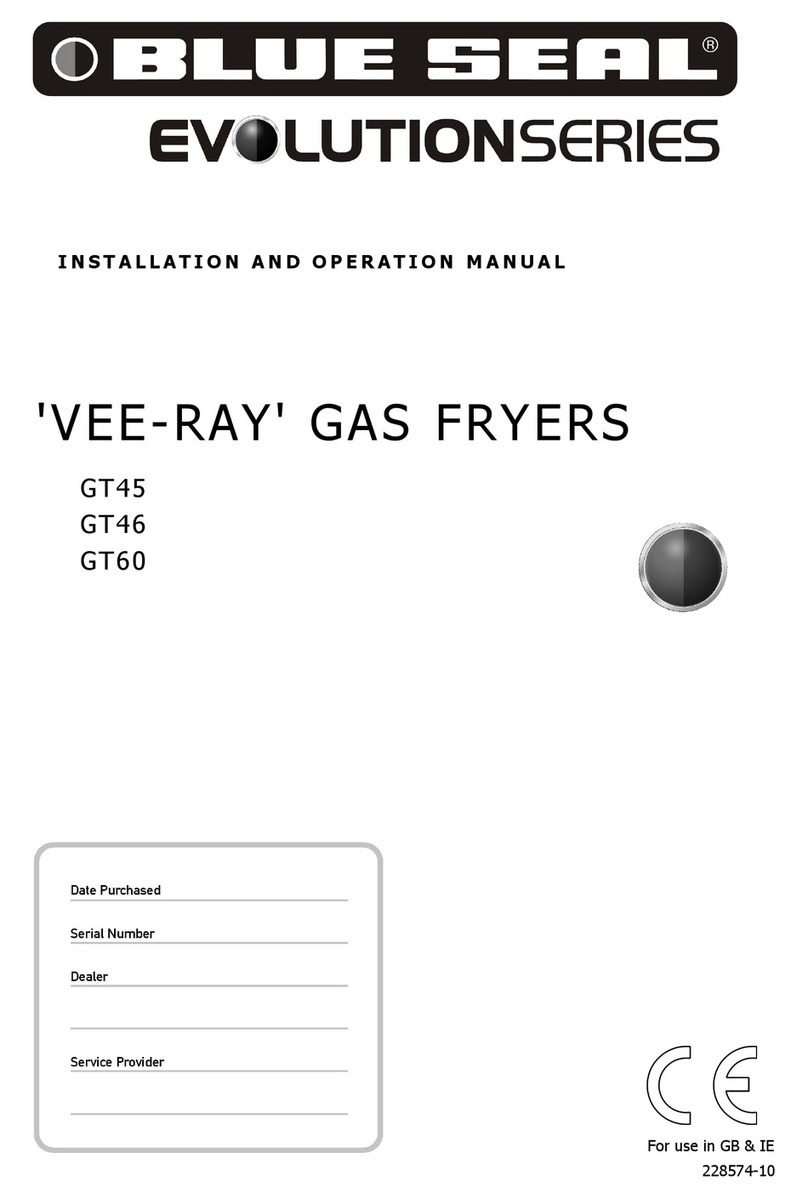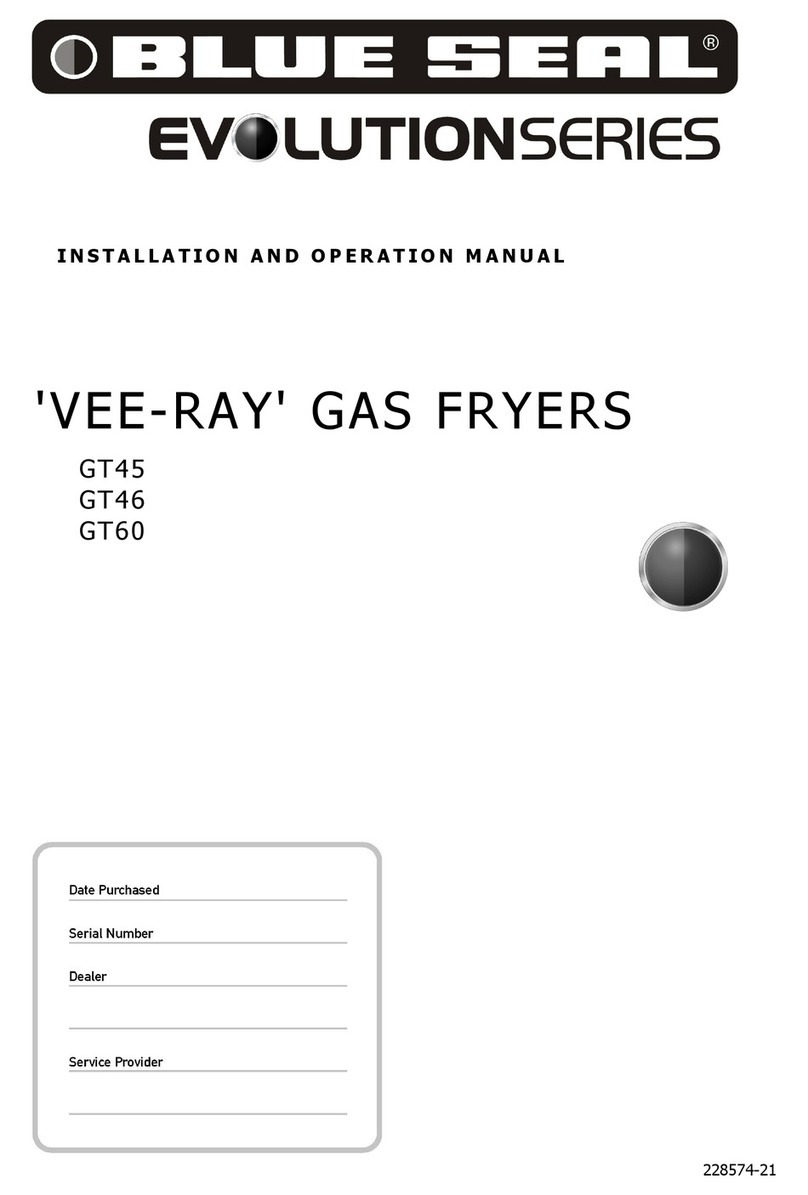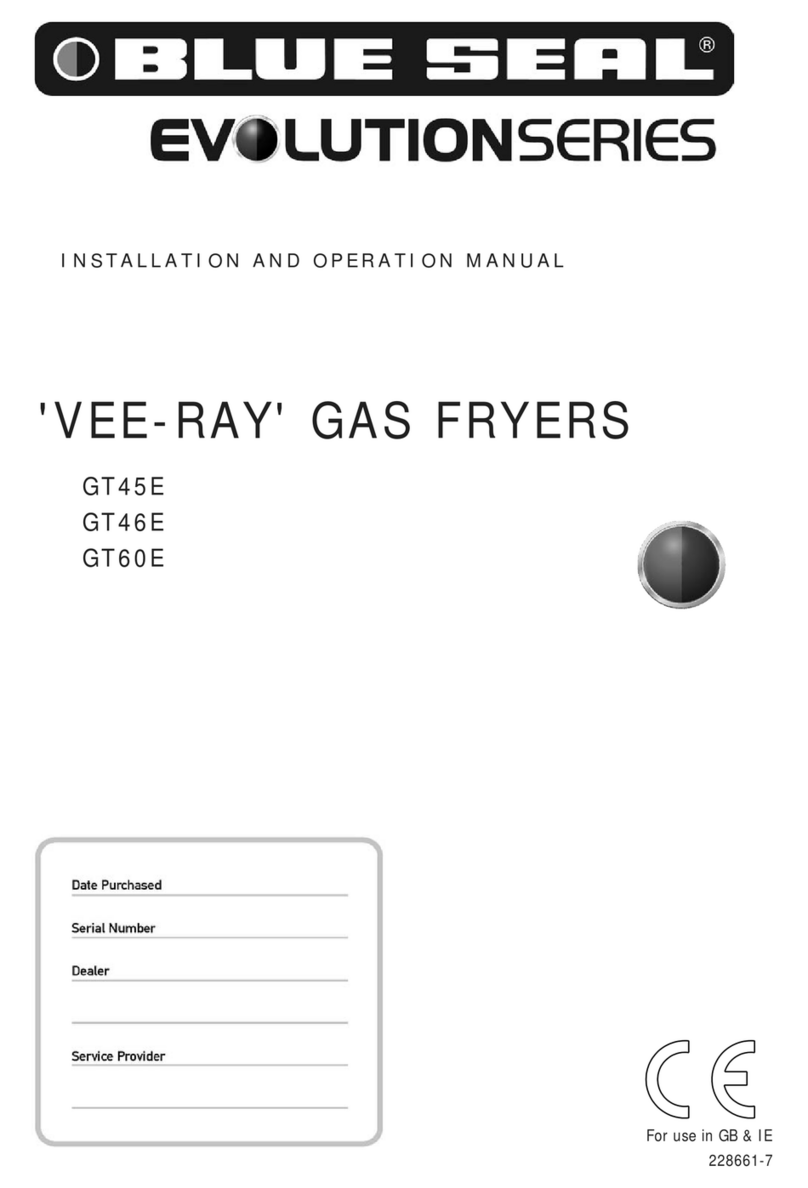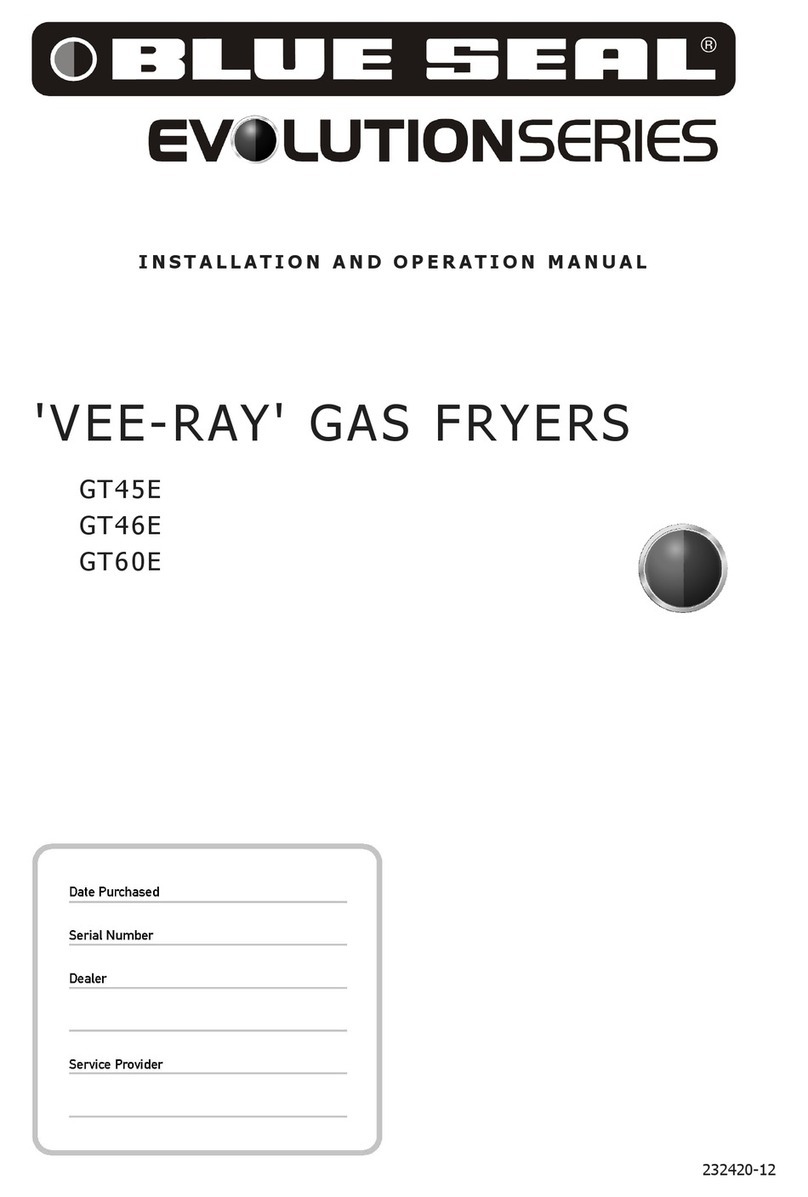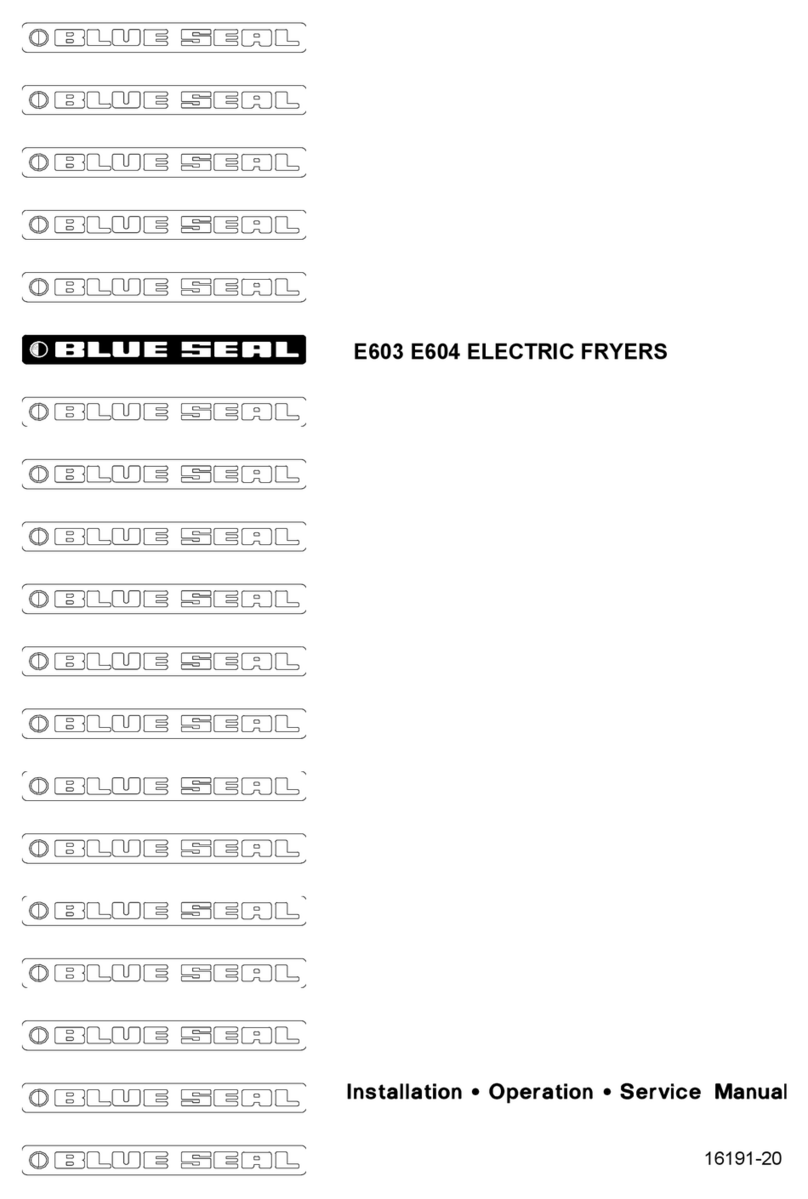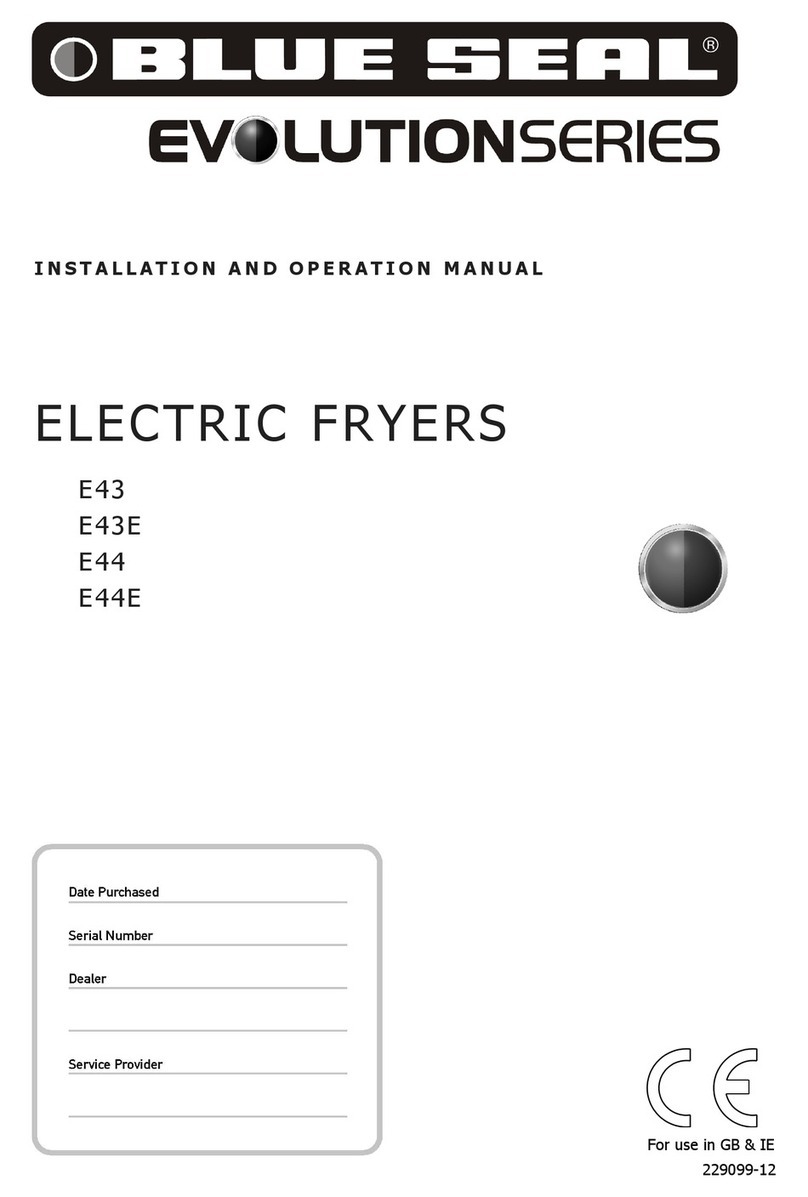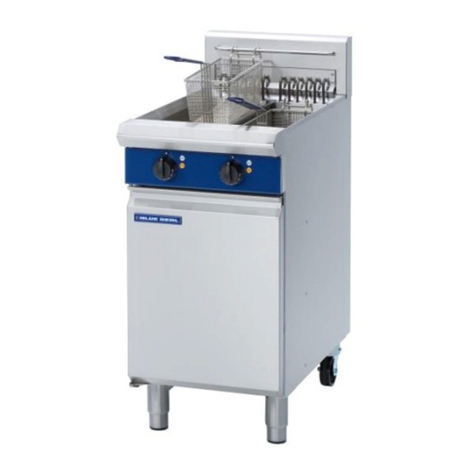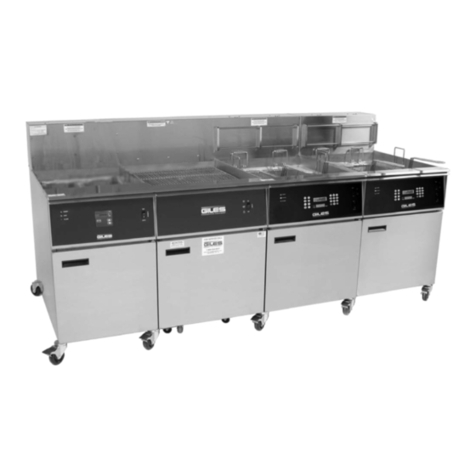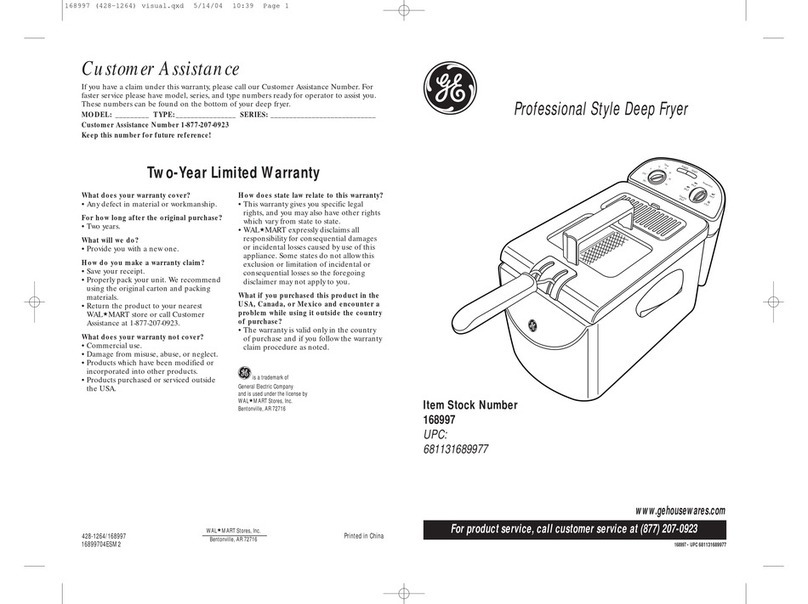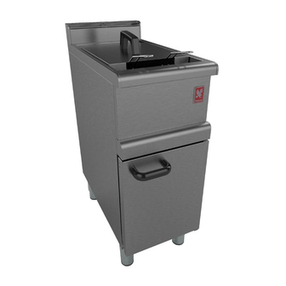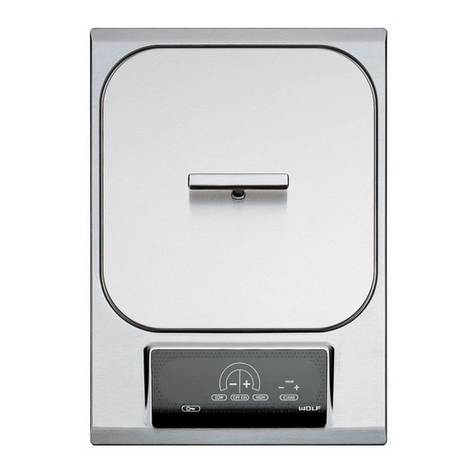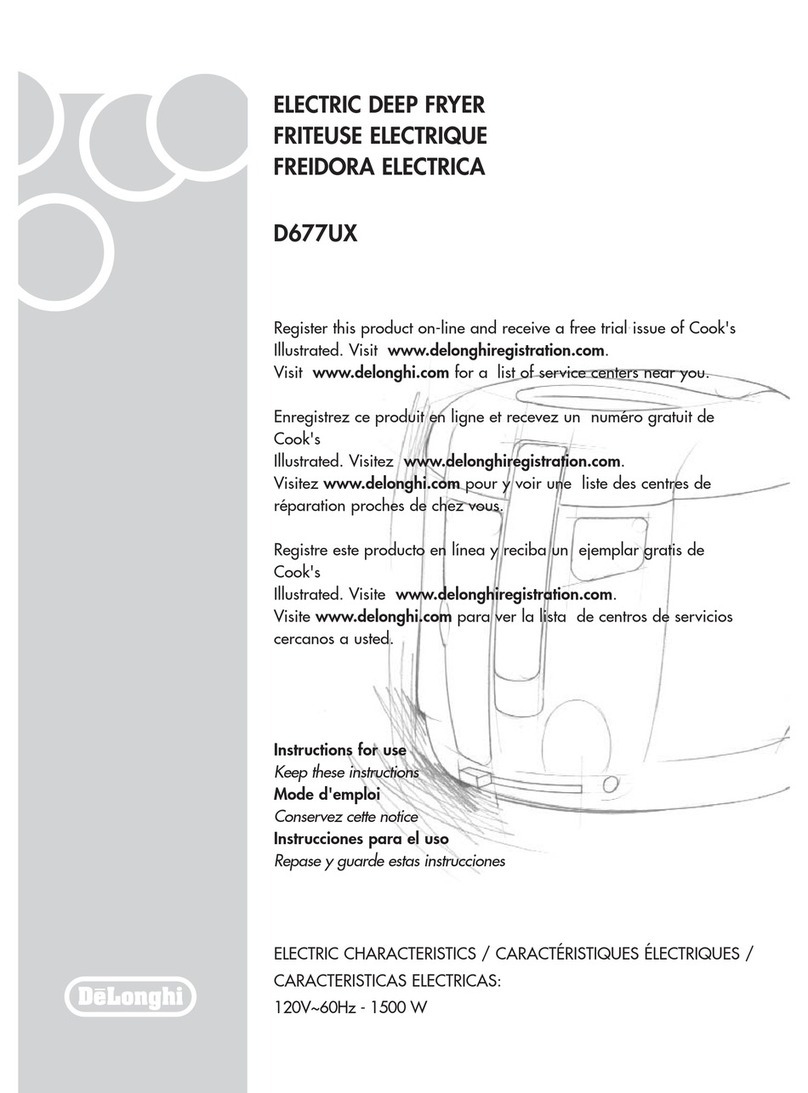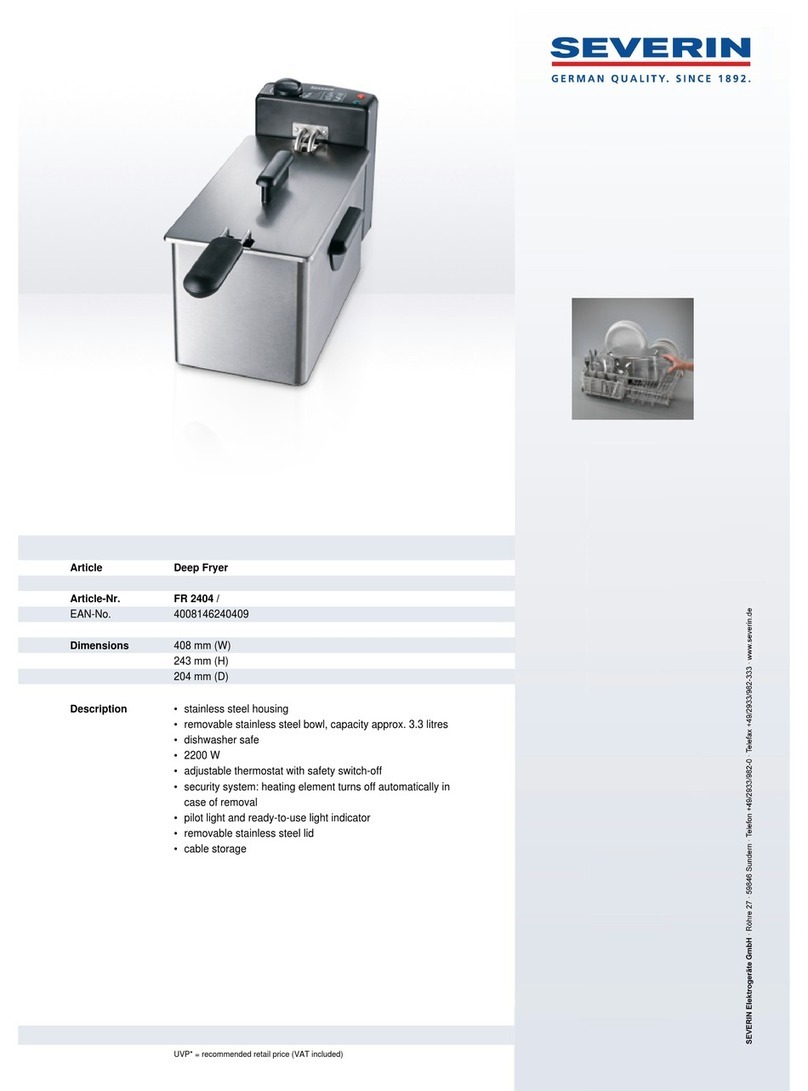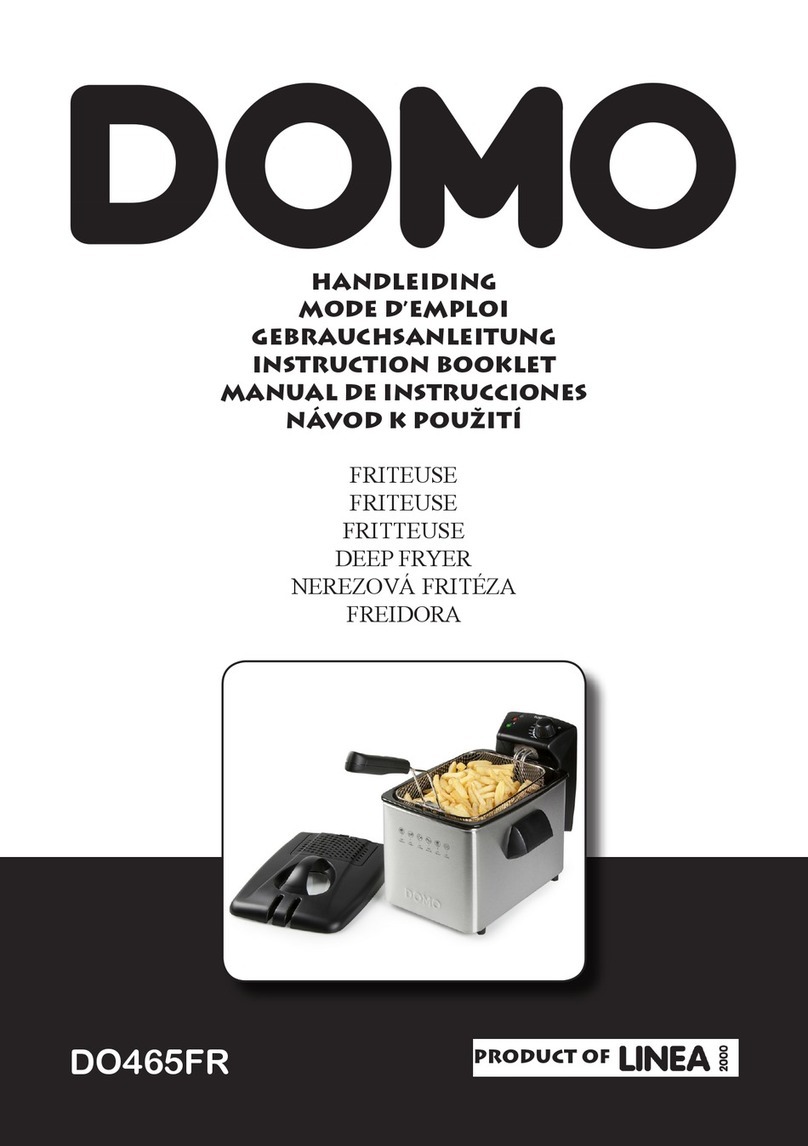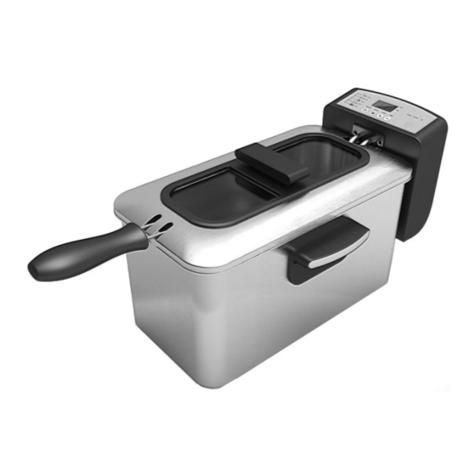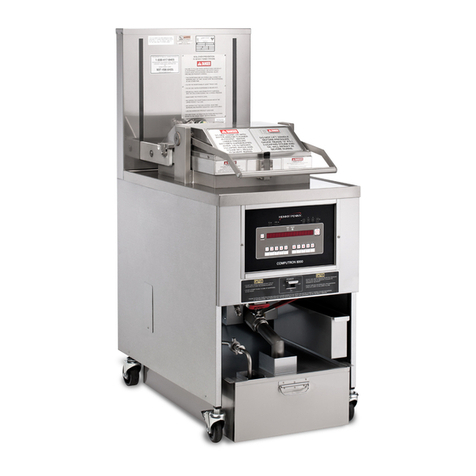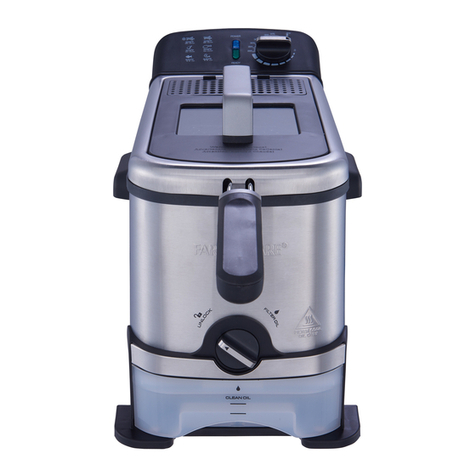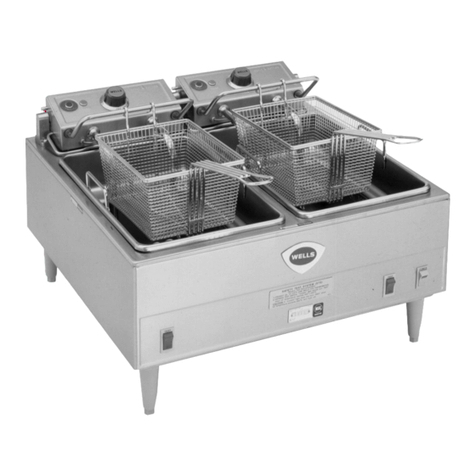Specifications
4
Model Numbers Covered in this Specification
E43 'Fast-Fri' Electric Fryer, Manual Control (Single Tank - 27ltr).
E43E 'Fast-Fri' Electric Fryer, Digital Control (Single Tank - 27ltr).
E44 'Fast-Fri' Electric Fryer, Manual Control (Twin Tank - 24ltr).
E44E 'Fast-Fri' Electric Fryer, Digital Control (Twin Tank - 24ltr).
General
These fryers are constructed in stainless steel and due to the swing out elements are easy to clean.
The elements cannot be switched ‘ON’ in the raised position. A perforated stainless steel tray is fitted
over the elements, serving the double purpose of protecting the elements and supporting the baskets.
Two slots provided across the front of the splashback are to support the baskets to drain fat / oil after
cooking. The fat / oil drained off is thus returned directly to the fryer tank.
Electrical Supply Requirements
Electrical Connection
E43 and E43E
Electrical supply connection point is located at the rear of the appliance, approximately 62 mm from
the right hand side, 365 mm from the rear and 441 mm from the floor.
E44 and E44E
Electrical supply connection point is located at the rear of the appliance, approximately 62 mm from
the right hand side, 365 mm from the rear and 440 mm from the floor.
When connecting a this electric appliance to the mains supply, ensure that the following is carried
out:-
•
The supply cord shall not be lighter than ordinary tough rubber sheathed (oil
resistant) cord. e.g. H05 RN-F with sufficient current carrying capacity cable sizes.
•
The branch supply line shall be overload protected.
•
The point of connection shall be as close as practicable to the appliance have a
n
isolating switch accessible during manual operation of the appliance.
• The supply cord shall be protected against any mechanical or thermal damage.
Refer to the appropriate wiring standards for the size of cable that is to be supplied to an appliance
for the current drawn on that line.
WARNING:
THIS APPLIANCE MUST BE EARTHED. IFTHE SUPPLY CORD IS DAMAGED, IT MUST BE REPLACED BY A
SUITABLY QUALIFIED PERSON IN ORDER TO AVOID AHAZARD.
Model Power Supply Total Power
Input
Amps
Voltage Type Frequency L1 L2 L3
E43 / E43E 400-415Vac 3 P+N+E 50 / 60Hz 17kW 23.6 23.6 23.6
E44 / E44E
Non-UK 400-415Vac 3 P+N+E 50 / 60Hz 17kW 23.6 23.6 23.6
E44 / E44E
UK Only 400-415Vac 3 P+N+E 50 / 60Hz 14kW 19.4 19.4 19.4
